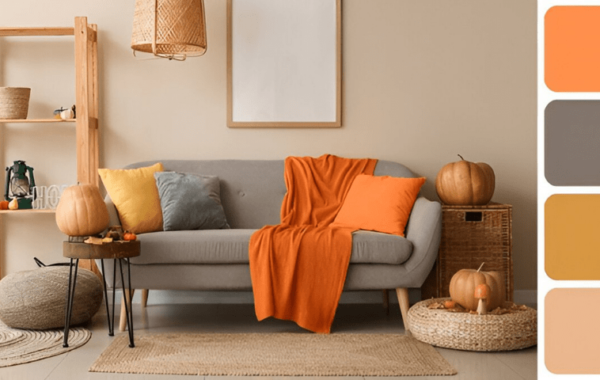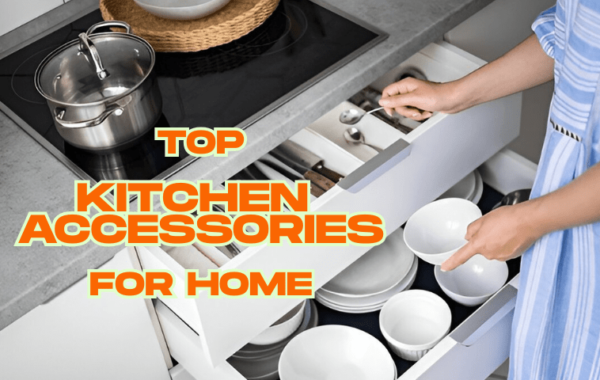
The Evolution of Home Living: Embracing Smart Home Designs for a Connected Future
Introduction:
Home living has undergone a revolutionary transformation in an era of technological advancements. Once considered futuristic, smart home designs have seamlessly integrated into our daily lives, offering unparalleled convenience, efficiency, and a glimpse into the possibilities of the connected future. This article explores the evolution of smart home designs, the technologies driving this change, and how homeowners can embrace and benefit from this innovative approach to modern living.
The Rise of Smart Homes:
Smart homes represent a paradigm shift in how we interact with our living spaces. The development of Internet of Things (IoT) technology, increased connectivity, and the advent of artificial intelligence have paved the way for homes that are not just shelters but intelligent entities that respond to our needs and preferences. Smart home designs encompass many features to enhance and simplify our daily routines, everything from energy management to entertainment to lighting and security.
1. Intelligent Automation:
At the heart of smart home designs lies intelligent automation. Automated systems, controlled through smartphones or voice commands, enable homeowners to remotely manage various aspects of their homes. This includes adjusting thermostats, setting lighting preferences, and even maintaining home security systems with a simple tap on a mobile app.
2. Energy Efficiency:
Smart homes prioritize sustainability by incorporating energy-efficient technologies. Automated thermostats learn and adapt to the household’s temperature preferences, optimizing energy consumption. Smart lighting systems adjust brightness based on natural light conditions, reducing energy waste. These innovations affect the environment and lead to substantial cost savings for homeowners.
3. Enhanced Security:
One of the top concerns for homeowners is security, and smart home designs provide advanced solutions. Smart doorbells, motion sensors, and other sensors enable homeowners to view and monitor their property remotely in real-time. Integration with smart locks and alarm systems adds an extra layer of protection, with alerts and notifications sent directly to the homeowner’s devices.
4. Seamless Connectivity:
A hallmark of smart home designs is the seamless connectivity between devices. The ability of different devices to communicate with each other creates a cohesive and synchronized living environment. For instance, when the smart thermostat detects that no one is home, it can communicate with the smart lighting system to turn off lights, contributing to energy efficiency and cost savings.
5. Personalized Entertainment:
Smart homes redefine the entertainment experience. From voice-activated virtual assistants that can play music or answer queries to home theaters with smart lighting and sound systems, homeowners can create personalized entertainment ecosystems. Integrating these systems allows for a cinematic experience at the touch of a button.
Embracing Smart Home Designs:
Now that the benefits of smart home designs are evident, homeowners may wonder how to integrate these technologies seamlessly into their living spaces. Here are key considerations to guide the incorporation of smart home features:
1.Assess Individual Needs:
Start by identifying specific needs and preferences. Whether it’s energy efficiency, enhanced security, or convenience, understanding individual requirements will guide the selection of smart home features that align with these priorities.
2.Gradual Integration:
Embracing smart home designs can be a partial overhaul. Homeowners can start by gradually incorporating smart devices into their existing setups. Before expanding to more complex integrations, begin with essentials like smart thermostats or lighting systems.
3.Interoperability:
Ensure that the chosen smart devices are compatible and can communicate seamlessly. Opting for devices that adhere to standard communication protocols, such as Zigbee or Z-Wave, promotes interoperability and prevents the creation of isolated smart systems within the home.
4.Security Considerations:
As with any technological integration, security is paramount. Change default passwords, enable two-factor authentication, and regularly update firmware to protect smart devices from potential vulnerabilities. Additionally, invest in reputable brands known for their commitment to security.
5.Future-Proofing:
Given the rapid pace of technological advancements,and consider future-proofing smart home designs. Select devices and systems that not only be easily upgraded or integrated with emerging technologies, but also ensuring that the home remains on the cutting edge of innovation.
6.Professional Consultation:
Consulting with professionals can also provide valuable insights for those needing help integrating smart home features. Interior designing consultants and installers, therefore can assess the home’s infrastructure and also recommend tailored solutions that align with individual needs.
Conclusion:
Smart home designs represent the convergence of technology and modern living,by offering homeowners unprecedented control, efficiency, as well as comfort. The possibilities such as vast, from energy-efficient solutions to enhanced security and also personalized entertainment. The environment of smart homes will change as technology advances, therefore by presenting new opportunities, homeowners can embrace the connected future. By understanding individual needs, integrating smart devices, and by prioritizing interoperability and security, and seeking professional guidance, homeowners can not only journey towards a more innovative, but also to connected, and efficient home living experience.
Cibi+Simeon Designs is the best interior designing company in Chennai. We are proficient in integrating smart technologies into buildings. Our smart home ideas are unique and innovative initiatives that make us stand out in our services. For sophisticated and comfy living, contact us.
FAQs:
What is a smart home design?
A smart home design integrates technology to enhance daily living, allowing homeowners to control and automate various aspects of their homes. It ranges from lighting and security to entertainment and energy management.
How do smart homes improves energy efficiency?
Smart homes optimize energy consumption through certain features. They are like automated thermostats and lighting systems. It adapts to user preferences and contributes to environmental sustainability and cost savings.
What security measures are integrated into smart home designs?
Smart home designs often incorporate advanced security features. These include remote monitoring through cameras, sensors, smart locks, and real-time alerts, which provide homeowners with enhanced control and peace of mind.
Can I gradually incorporate smart home features into my existing home?
Yes, smart home integration can be a partial overhaul. Homeowners can start with basic features like smart thermostats or lighting. Later, they gradually expand their smart ecosystem over time.
How can I ensure the compatibility of different smart devices in my home?
To ensure seamless communication between devices, it is crucial to select smart devices that adhere to standard communication protocols, such as Zigbee or Z-Wave, which promote interoperability within the smart home ecosystem.


